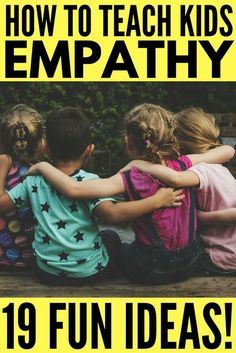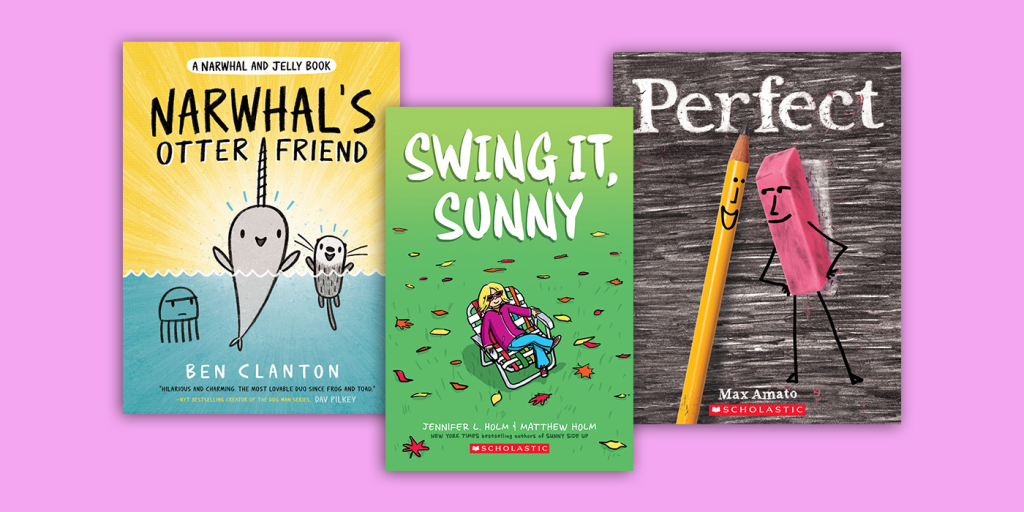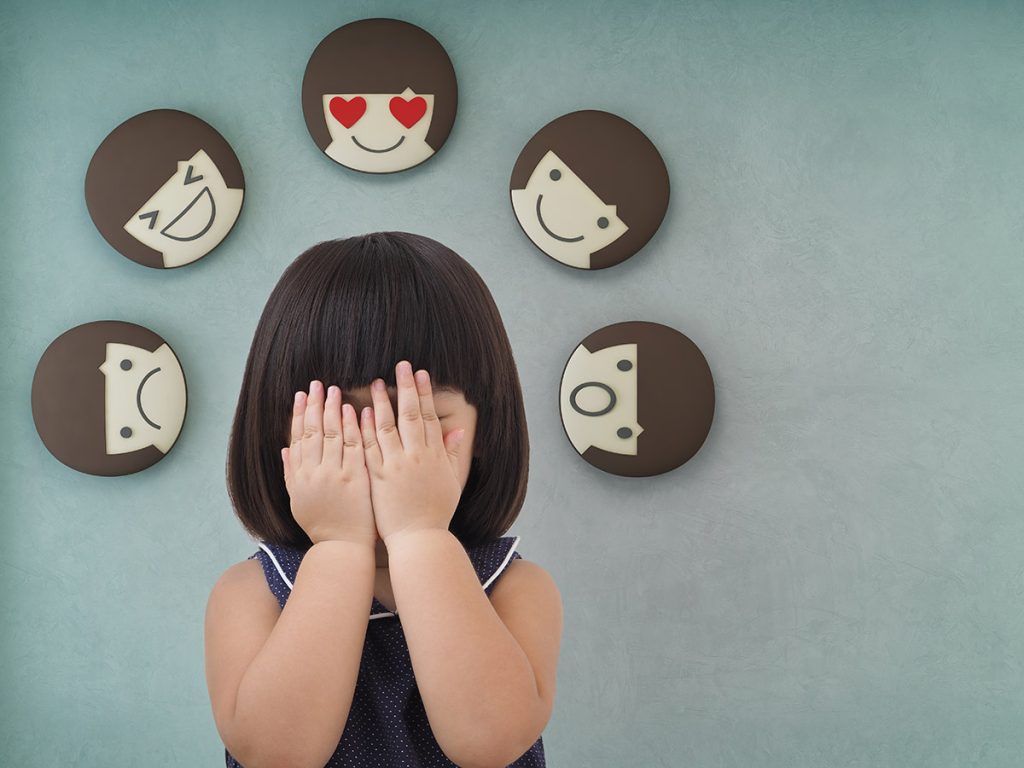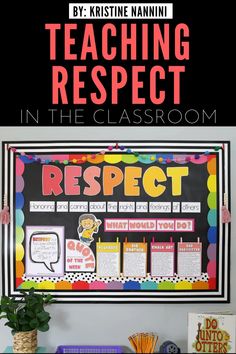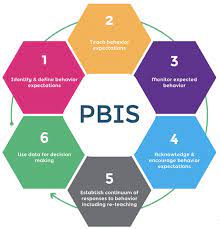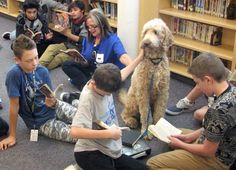National Sorry Day is an important event in Australia recognized on May 26th each year, acknowledging the historical mistreatment of Aboriginal and Torres Strait Islander people, particularly the Stolen Generations. Within classrooms, it offers a profound opportunity for educators and students to engage in activities that reflect upon and learn from this part of Australia’s history. Here are some respectful and educational activities that could be facilitated in a classroom setting:
1. Acknowledgment of Country: Start the day with an Acknowledgment of Country. Teach children the significance of this practice and encourage them to take part in acknowledging the traditional custodians of the land.
2. Interactive Storytelling: Use storytelling to share the experiences of the Stolen Generations. Age-appropriate books or digital stories can help younger students understand complex concepts with empathy and context.
3. Art Projects: Encourage students to express their learning and reflections through art. This could include collaborative mural painting, indigenous art techniques or creating symbolic sorry stones or sorry flowers.
4. Group Discussions: Host a classroom discussion where students can share their thoughts about Sorry Day. Create a safe space for questions and guide the conversation with respect and sensitivity towards indigenous perspectives.
5. Guest Speakers: Invite members of local Aboriginal communities to share their stories, experiences, and teachings about their culture, history, and the meaning behind Sorry Day.
6. Reflection Activities: Have students partake in writing activities where they pen letters of reflection, hope or apology to understand the effects of past policies on Aboriginal communities.
7. Cultural Performances: Watch or even invite performers to present traditional Aboriginal dances or songs that celebrate their culture while also commemorating this solemn day.
8. Educational Videos: Use documentaries and short films that are appropriate for a classroom setting to depict the events leading up to and subsequent apologies related to National Sorry Day.
9. Library Corner: Set up a section of the classroom with books by Aboriginal authors or about indigenous Australian history for students to read individually or in pairs.
10. Classroom Pledges: End the day by having students make individual or collective pledges on how they can contribute to reconciliation within their community.
Embedding these activities within classroom instruction on National Sorry Day enables educators to impart essential lessons on respect, empathy, multiculturalism, and history that are vitally important for young minds developing an understanding of their shared national context and heritage.
Here Are Some Effective Ways to Support Anxious Students in the Classroom
Anxiety is a common issue that many students face in the classroom. It can significantly impact their academic performance and overall well-being. As teachers, it is crucial to create a supportive and understanding environment to help alleviate anxiety and foster a positive learning experience. Here are some effective ways to support anxious students in the classroom:
1. Open communication and trust: Build a relationship based on trust with your students. Encourage open communication and let them know they can approach you with any concerns or anxieties they may have.
2. Educate yourself: Take the time to educate yourself about anxiety disorders and the various ways they can manifest. Understand the symptoms, triggers, and potential impacts on student performance.
3. Create a safe and inclusive classroom environment: Aim to establish a classroom environment that promotes a sense of safety, belonging, and acceptance. Encourage collaboration, respect, and empathy among students.
4. Implement a predictable routine: Structure and consistency can be very comforting for anxious students. Establish a daily routine and clearly communicate expectations and procedures to help them feel more secure.
5. Provide clear instructions: Ensure that your instructions are clear, concise, and easy to understand. Use visual aids, step-by-step guides, or checklists to help students navigate tasks and assignments.
6. Break tasks into smaller steps: Complex or overwhelming tasks can heighten anxiety in students. Break down assignments or projects into smaller, manageable steps. This approach helps students feel less overwhelmed and enables them to focus on one task at a time.
7. Offer support and reassurance: Regularly check in with anxious students to provide support, reassurance, and encouragement. Let them know that it’s okay to ask for help and that you believe in their abilities.
8. Incorporate relaxation techniques: Teach and practice relaxation techniques such as deep breathing exercises, mindfulness activities, or guided imagery. These techniques can help students manage their anxiety during challenging situations.
9. Encourage self-care: Promote self-care activities outside of the classroom. Encourage students to engage in hobbies, exercise, or practice mindfulness techniques to reduce stress and anxiety.
10. Collaborate with parents and professionals: Maintain open communication with parents or guardians regarding their child’s anxiety. Seek support from school counselors, therapists, or other professionals when necessary.
Remember, each student is unique, and their anxiety may manifest differently. It’s essential to listen, adapt, and tailor your approach to suit their individual needs. By implementing these strategies, you can create a supportive classroom environment and empower anxious students to thrive academically and emotionally.
Teaching Empathy Kindness and Compassion for Kids 2
In a world that is increasingly interconnected and diverse, teaching children about empathy, kindness, and compassion has never been more important. These fundamental qualities help foster understanding, diminish conflicts, and build better communities. When children learn to put themselves in others’ shoes, act with consideration, and show care for those around them, they develop not just socially but emotionally as well.
Empathy is the ability to understand and share the feelings of another. For children, learning empathy is about recognizing their own emotions and those of others. It can be nurtured by talking about feelings openly with children, reading stories that explore emotions, and encouraging children to consider how their actions affect others.
Kindness is an extension of empathy. It is the quality of being friendly, generous, and considerate. Teaching kindness involves modelling kind behaviour ourselves as adults—saying please and thank you regularly for example—and praising children when they behave kindly toward others. One effective way is to involve them in acts of service or kind deeds for neighbors or community members.
Compassion goes a step further; it’s not only understanding someone’s distress but also wanting to alleviate it. To instill compassion in children it’s important to encourage them to help those in need and to talk about the importance of doing good for its own sake—not for reward or recognition.
Children can engage in activities like making cards for sick friends or collecting toys for those less fortunate to practice these qualities. Role-playing exercises where kids can act out different scenarios also help them understand different perspectives.
Remember that teaching these virtues requires consistency and patience. Children learn best by observing the behaviour of those around them—especially their caregivers. It’s crucial we exemplify these traits in our daily interactions if we expect our young ones to embrace them fully.
By prioritizing empathy, kindness and compassion in early education we cultivate individuals who are not only aware of their own emotions but are also responsive to the needs and feelings of others. This lays a foundation for empathetic leadership in families, communities, and even countries—a world where everyone feels understood and valued could be closer than we think.
World Kindness Day – 10 Ways to Teach Kids to Be Kind
In a world where everyone is busy chasing their goals, Kindness Day stands out as a beacon of hope, reminding us of the importance of being kind to one another. World Kindness Day, celebrated annually on November 13th, is more than just a day; it’s a movement that encourages individuals to overlook boundaries, race, and religion and promote kindness in all its forms.
Teaching kids to be kind is crucial for fostering empathy and compassion from an early age. Here are ten ways to instill kindness in children:
1. Lead by Example – Children learn by watching the adults in their lives. Make sure they see you being kind to others through your actions and words.
2. Volunteer Together – Spend time volunteering with your kids at local food banks, animal shelters, or senior centers. It’s a great way for them to see firsthand the impact of kindness.
3. Encourage Friendly Gestures – Teach kids to greet others warmly, hold doors open, and say “please” and “thank you.” These small acts are the building blocks of kindness.
4. Share Stories About Kindness – Read books or watch shows that highlight compassionate behaviors to teach children the value of being kind through stories they can relate to.
5. Practice Compliments – Help your child master the art of giving genuine compliments. Encouraging them to find nice things to say about others will spread positivity.
6. Small Acts Matter – Sometimes, it’s the little things that count. Encourage children to help out without being asked whether at home or in school.
7. Reward Kind Behavior – Recognize and reward acts of kindness when you see them in your children. This reinforcement makes them more likely to repeat the behavior.
8. Teach Empathy – Discuss feelings and teach them to consider how their actions might affect others. Empathy is a critical component of kindness.
9. Create Kindness Projects– Come up with fun activities like making cards for hospital patients or baking cookies for neighbors, so kids can participate in acts of kindness directly.
10. Kind Words Jar– Set up a jar at home where every family member can drop notes describing kind acts they’ve witnessed or done themselves. Regularly read these notes together to celebrate kindness within the family.
By teaching our children these valuable lessons, we’re setting the foundation for a kinder future for everyone!
8 Books to Teach Social Skills to Kids in Your Classroom
Teaching social skills to children is a key part of their development, and educators are always looking for effective tools to facilitate this growth. Books can be exceptional allies in this mission, offering stories and scenarios that kids can relate to and learn from. Here are 8 books that can help teach social skills to the kids in your classroom:
1. “Have You Filled a Bucket Today?” by Carol McCloud – This book encourages positive behavior through the concept that everyone has an invisible bucket that holds their good thoughts and feelings. It teaches children how to express kindness, appreciation, and love to fill others’ buckets.
2. “My Mouth Is a Volcano!” by Julia Cook –This entertaining book helps children learn about self-control and how to manage the impulse to speak before others are finished talking, emphasizing respect for others’ speaking turns.
3. “We’re All Wonders” by R.J. Palacio – Based on her longer novel “Wonder,” Palacio’s picture book introduces younger readers to Auggie Pullman, a boy with facial differences who teaches us all about acceptance and empathy.
4. “The Invisible Boy” by Trudy Ludwig – This story showcases Brian, a quiet child who feels invisible at school, until a new kid arrives. It highlights inclusivity, friendship, and noticing those who could be overlooked.
5. “Listening with My Heart” by Gabi Garcia – A gentle reminder for kids about the importance of being kind not only to others but also to themselves, this story focuses on self-compassion and empathy.
6. “Stick and Stone” by Beth Ferry – This tale of friendship between Stick and Stone offers an adventure that includes facing bullies, helping friends in need, and sticking together through tough times.
7. “What If Everybody Did That?” by Ellen Javernick – This book provokes thought about consequences of our actions on the community. Every time the main character commits a small act of social disobedience, he learns about responsibility.
8. “Do Unto Otters: A Book About Manners” by Laurie Keller – A fun read with playful illustrations that outline how otters (and children) should treat each other with kindness, honesty, consideration, and politeness.
Incorporating these books into your classroom can open up discussions on compassion, respect, understanding differences, being responsible citizens within a community, and so much more! By using these engaging texts as tools, you’ll be able to guide your students in developing the social skills they need for both school and life.
Printable Resource to Help Students Verbalize Feelings
As younger generations navigate the complexities of emotional literacy, educators and parents seek innovative tools to facilitate this important aspect of development. A printable resource to assist students in verbalizing their feelings has emerged as a vital aid in this mission, providing a tangible and interactive means for children to express themselves.
When feelings remain bottled up or are expressed in harmful ways, not only does it affect the individual’s mental health, but it can also impact their social interactions and academic performance. A simple yet effective tool, the printable resource can take many forms, such as emotion cards, feeling charts, or journals. These aids are designed with vibrant visuals and straightforward language to help break down the barriers that often keep children from opening up about their emotions.
The use of these printables in a classroom or home setting allows students to point to or articulate what they’re feeling using prompts or images that represent a range of emotions from happiness and excitement to sadness and anger. For instance, an “emotion wheel” can serve as a guide for children to pinpoint the specific nature of their feelings, fostering an understanding that emotions are nuanced and can vary in intensity.
Moreover, these resources often include guidelines and activities encouraging reflection. Children can be prompted to think about what triggered their feelings, how their body reacts to different emotions, and appropriate ways to cope with them. This reflective practice not only aids in emotional verbalization but is also a stepping stone to developing empathy and interpersonal skills.
In summary, printables designed to help students express their feelings are valuable tools yielding several benefits:
– They offer a visual aid facilitating identification and communication of emotions.
– They serve as a prompt for introspection and discussion about emotional experiences.
– They teach children that it is normal to experience a wide range of feelings.
– They contribute to building healthier coping mechanisms.
– They help create a supportive environment where emotional expression is normalized rather than stigmatized.
Incorporating such tools into educational curricula establishes emotional literacy as a priority, much like reading or mathematics. By validating children’s feelings through structured support systems like printable resources, society takes another step towards nurturing well-rounded individuals capable of understanding not just the world around them but also the complex world within them.
Kindness Reflection Classroom Display
Integrating social and emotional learning into the classroom environment is essential for nurturing student well-being and fostering a positive school culture. One way to emphasize the importance of kindness within the classroom is through the creation of a “Kindness Reflection” display. This visually engaging feature not only beautifies the space but also serves as a constant reminder for students to reflect on their actions and cultivate empathy.
Importance of Kindness in the Classroom
Incorporating themes of kindness has profound impacts on students. It encourages inclusivity, reduces bullying, and promotes a collaborative spirit. Acts of kindness have a ripple effect that enhances the overall learning experience and supports character development.
Creating the Display
To create a “Kindness Reflection” classroom display, follow these steps:
1.Choose a Visible Location: The display should be in an area where all students can see it regularly, such as near the entrance or at the front of the classroom.
2.Involve Students: Engage students in designing and creating the display. This gives them a sense of ownership and strengthens their commitment to maintaining kindness in class.
3.Reflect Diversity: Ensure that the display represents different cultures, languages, and perspectives so that every student can relate to it.
4.Interactive Elements: Add parts that can be updated or changed by students, like a “kind act” spot where students put sticky notes when they observe acts of kindness in class.
5.Quotes and Images: Use inspirational quotes about kindness along with pictures that depict kind actions or smiling faces to visually communicate your message.
6.Set Goals: Attach goals or challenges related to kindness that students can work towards collectively.
Maintenance and Evolution
A “Kindness Reflection” display should not be static; it ought to evolve with time:
1.Weekly Spotlight: Rotate featured stories or acts of kindness weekly to keep content fresh and engaging.
2.Classroom Talks: Hold regular discussions reflecting on what’s new on the display, what’s been learned, and how kindness is being practiced.
3.Reflective Writing Prompts: Use prompts from the display for journaling or creative writing assignments.
Conclusion
The “Kindness Reflection” classroom display acts not just as decor but as a tool for instilling one of life’s most valuable lessons—kindness is strength. Through this interactive element, teachers can integrate important social emotional concepts into daily learning and nurture an atmosphere where every student knows they belong and are valued.
Friendship Teaching Resources
Friendship is one of the most valuable relationships in human life, deeply woven into our social fabric and crucial for personal and emotional development. In the educational context, teaching about friendship can have profound implications, helping students to understand themselves and others better, to develop empathy, and to learn important social skills that are critical in both their academic and personal lives.
One of the most effective ways to incorporate friendship teaching resources into a curriculum is through literature. Books like “Charlotte’s Web” by E.B. White or “Wonder” by R.J. Palacio offer compelling narratives that highlight the nuances of friendship, loyalty, acceptance, and the challenges that sometimes accompany them. These stories can serve as accessible points of discussion for students to explore their own ideas about friendship.
Interactive activities also play a key role in teaching these concepts. Exercises such as “Friendship Bingo” where students fill out bingo cards with qualities of a good friend or “Role-Play Scenarios” in which students act out different friendship dilemmas can heighten awareness and promote practical learning about conflict resolution within friendships.
Classroom projects like creating a “Friendship Tree,” on which students attach leaves that feature names or qualities of good friends encourage continuous reflection on what makes friendships healthy and strong. These activities can be integrated into daily classroom routines or used during National Friendship Day celebrations to reinforce the importance of building and maintaining positive relationships.
Additionally, teachers could engage students in discussions about famous friendships from history. Discussing duos like Helen Keller and Anne Sullivan or Buzz Aldrin and Neil Armstrong provides historical contexts for teamwork and mutual support, which are fundamental aspects of friendship.
For younger students, songs and games are particularly useful tools. Singing songs like “You’ve Got a Friend in Me” from the movie “Toy Story” or playing collaborative games that require teamwork bolster the notion that friendships involve support, fun, and working together towards a common goal.
Finally, digital resources such as websites or applications designed to teach social skills can offer interactive and personalized experiences for learners. Programs like Second Step or apps such as ‘Social Express’ provide structured lessons on various aspects of social interaction including making friends, understanding feelings, cooperation, and assertiveness.
In conclusion, the diversity of friendship teaching resources available allows educators to present these essential life skills in engaging, age-appropriate ways for students at all levels. Through literature, interactive activities, discussions on historical friendships, music, games, and digital programs, students can not only learn about friendship but also practice it in their everyday interactions within the school environment.
What is PBIS?
Positive Behavioral Interventions and Supports (PBIS) is an evidence-based framework aimed at improving and integrating all of the data, systems, and practices affecting student outcomes every day. It’s a way to support everyone – from students to teachers to administrators – to create positive, predictable, safe environments where everyone has an opportunity to thrive.
Born out of the broader field of behavior analysis, PBIS applies a tiered system of support to cater to all students’ needs. Its implementation typically involves several critical elements that structure it distinctly from other behavior management strategies:
1. Prevention-focused: Its foundation is to prevent behavioral issues before they occur.
2. Instructional approach to discipline: Students are taught expected behaviors and provided with regular acknowledgements for displaying them.
3. Data-driven decision making: Decisions are based on data about student behavior and its context, which helps identify needed supports.
4. Systems perspective: Change happens not just at the individual student level but across classrooms, schools, districts, and even states — wherever the framework is applied.
5. Continuum of interventions: The supports range from school-wide interventions for all students (Tier 1) to targeted group interventions for some students (Tier 2) to intensive individualized interventions for a few students (Tier 3).
6. Inclusivity: PBIS values diversity and equity with practices that acknowledge and respect the inherent worth of all students.
Implementation of PBIS often requires extensive staff training and ongoing coaching. Schools adopting PBIS can expect a reduction in problem behavior, an improved school climate, more effective teaching time, better student learning outcomes, and other large-scale organizational changes.
At its core, PBis prioritizes a positive school culture where positive behavior is taught and reinforced in all school settings because it understands the significant influence the environment has on an individual’s behavior. It underpins its practices with research showing that when academics and behavior are integrated within a school’s fabric, students achieve better socially and academically.
Through PBIS practices are tailored according to cultural context and individual needs within the school community. It moves beyond individual student-teacher interactions to include larger systemic factors that contribute to a student’s ability to succeed in the learning environment.
In essence, PBIS works as more than just a program or a policy; it represents a fundamental shift in how educators ensure learning environments are conducive for all students’ success by being responsive to behavioral needs.
The School Therapy Dog Improving Lives in the Classroom
In a world where classrooms are often buzzing with energy and activity, there is one gentle presence that has become an epicenter of calm, comfort, and joy — Auggie, the school therapy dog. A versatile companion equally adept at providing emotional support as he is at inspiring learning and laughter, Auggie’s impact extends far beyond the simple pleasures of a wagging tail.
Taking residence in his own dedicated spot within the school’s ecosystem, Auggie is not your average resident pooch. He doesn’t just roam the halls seeking out snacks and scratches behind the ears — although those are certainly appreciated. Auggie’s role is woven into the fabric of the school community. Students who struggle with reading find confidence when they read aloud to him, an experience that imbues them with courage and reduces the stress associated with learning challenges. Those who experience anxiety or emotional turmoil find a reassuring friend in Auggie — his presence offers a silent solidarity that speaks volumes.
But it’s not just students who have found solace and happiness in this four-legged faculty member. Teachers and staff also report a noticeable uplift in their mood and well-being, attributing moments spent with Auggie as a grounding experience amid their hectic schedules. There is science at play here; interactions with animals like therapy dogs have been shown to release endorphins in humans — those biochemical hallmarks of happiness.
Auggie’s days are filled with purposeful interactions. Whether he’s partaking in specially designed lessons that incorporate him into curriculum activities or he’s visiting various classrooms for one-on-one sessions, every pat on the head comes with mutual benefits. Lessons on empathy, responsibility, and kindness spring up naturally around him, providing educators with powerful teaching moments.
While Auggie may not be privy to lesson plans or staff meetings, his contributions to the educational mission are undeniable. As paws pad softly around learning spaces and big brown eyes offer silent encouragement, it’s clear that this therapy dog doesn’t just occupy space within his school; he elevates it for everyone who walks through its doors.
Auggie’s story is a reminder that sometimes, the simplest forms of support — those rooted in compassion and unconditional love — can be the most impactful. Where words fail or stress builds, a therapy dog like Auggie steps in to bridge gaps and heal hearts. It seems there may be no greater lesson than that which is taught by a friend with floppy ears and an endless reservoir of love to give.



